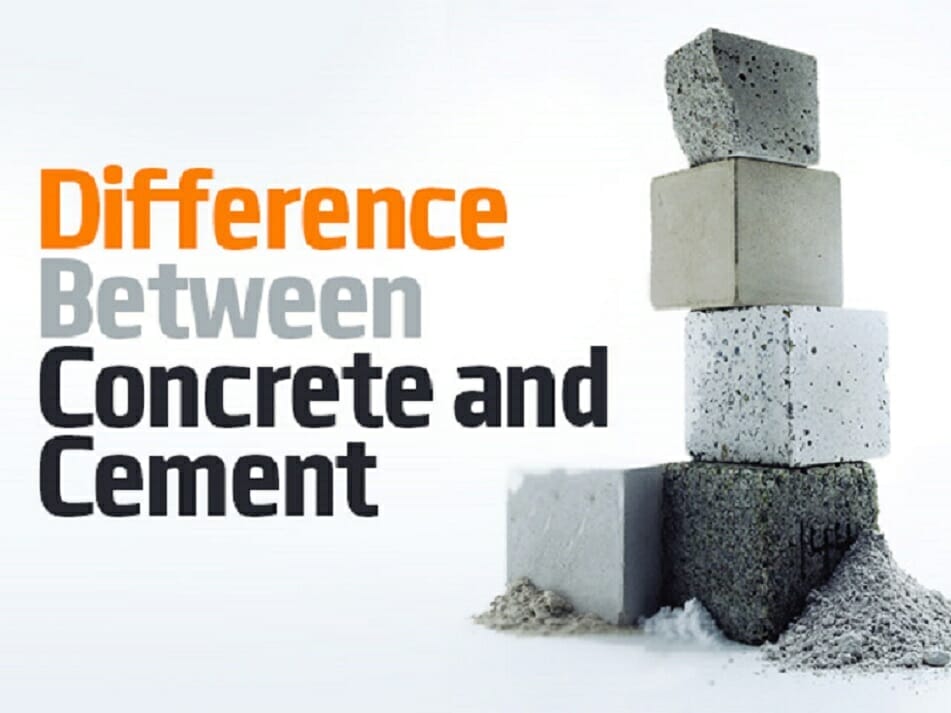When it comes to civil engineering and construction projects, getting the right mix of cement-sand-gravel ratio is important. It makes the standard concrete mix strong and helps it stand up to all kinds of weather and weight. Finding the perfect balance of these materials can make the concrete stronger, easier to work with, and less likely to crack. For example, a mix of 1 part cement, 2 parts sand, and 4 parts gravel is great for general construction, but we might need to tweak it depending on the job, like how much weight the structure will hold and what kind of conditions it’ll be exposed to.
But the cement-sand-gravel mix isn’t just about making things sturdy; it also affects how much money we spend and how eco-friendly our projects are. By playing around with the amounts of cement, sand, and gravel, we can make sure the concrete does exactly what we need it to while using resources wisely. For instance, adding more sand can make it easier to shape the concrete for fancy designs, while using less cement can help control the heat when pouring a lot of concrete. Understanding how to adjust the mix lets us create custom-made solutions that do the job well and are good for the environment, so our structures are strong and sustainable.
Importance of the Cement-Sand-Gravel Ratio
Understanding the cement-sand-gravel ratio is crucial for creating strong and durable concrete structures. This ratio directly influences the performance of concrete by determining the amount of cement, sand, and gravel used in the mix. With a well-calibrated ratio, concrete can efficiently withstand the structural loads it will encounter over its lifespan. However, an unbalanced ratio can lead to issues such as cracking, shrinkage, or inadequate load-bearing capacity, jeopardizing the integrity of the structure.
In addition, each component of the ratio plays a specific role. Cement acts as a binder, sand fills voids and enhances workability, and gravel provides strength and bulk. By optimizing this ratio, engineers and builders can produce concrete that meets strength requirements, withstands environmental conditions, and wears over time. Therefore, careful consideration of the cement-sand-gravel ratio during the mix design process is essential for achieving a durable and reliable final product.

Factors Influencing the Ideal Ratio
Understanding the importance of the cement-sand-gravel ratio is critical in construction projects, as it directly impacts key aspects of concrete performance, including strength, durability, and workability. Various factors need to be taken into account when determining the ideal ratio. For instance, the type of construction project being undertaken, whether it involves structural elements like beams and columns or pavements and decorative features, will require different cement-sand-gravel ratios. Furthermore, environmental conditions in the project area, such as exposure to extreme temperatures, moisture levels, and chemical environments, must be considered to ensure the longevity and optimal performance of the concrete.
Materials used in the concrete also play a crucial role in determining the ideal ratio. The characteristics of the cement, sand, and gravel, such as their particle size, shape, and grading, significantly impact how they interact when combined. For example, well-graded aggregates can enhance the workability of the mixture and reduce the amount of cement needed, thus optimizing the overall ratio. Moreover, the intended application of the concrete, whether for high-strength structural purposes or aesthetic considerations, dictates the necessary adjustments to the cement-sand-gravel ratio to achieve the desired performance outcomes. It is imperative for engineers and construction professionals to thoroughly understand and consider these factors to ensure the structural integrity and effectiveness of their concrete constructions.
Recommended Ratios for Different Applications
In the realm of construction applications for residential, commercial, and industrial projects, the ratio of cement to sand to gravel holds significant sway over the strength and longevity of the material. In residential settings, like driveways and patios, a commonly used ratio of 1:2:4 (one part cement, two parts sand, and four parts gravel) strikes a balance between robustness and workability, ensuring that the finished surface can endure regular use while maintaining an attractive appearance. In commercial contexts, where structures may need to bear heavier loads, the ratio may shift to 1:1.5:3, incorporating more cement to bolster the concrete’s strength for high-traffic areas or larger constructions.
In industrial environments, where the demands on concrete are even more exacting, the ratios can differ significantly. For high-performance concrete required in factories or warehouses with heavy machinery, a 1:1:2 ratio may be employed to heighten compressive strength, diminish porosity, and enhance resistance to environmental factors, thus prolonging the concrete’s durability. Conversely, lower ratios, such as 1:3:6, may be suitable for non-structural elements like decorative features or short-term installations where supreme strength is not a primary consideration. Thus, comprehending the ramifications of adjusting the cement-sand-gravel ratio is vital for achieving the desired performance characteristics across diverse project types.
Here are four recommended cement-sand-gravel ratios for different applications:
1. Residential Projects (Cement-Sand-Gravel Ratio: 1:2:4)
In standard residential construction, it is customary to use a mix ratio of 1 part cement, 2 parts sand, and 4 parts gravel. This particular ratio is chosen because it strikes a balance between strength and workability, making it well-suited for the construction of foundations and structural elements.
To provide more context, if the ratio is modified to 1 part cement, 3 parts sand, and 6 parts gravel (increasing the proportion of gravel), the resulting mix may not have the required strength for structural components. This could potentially lead to structural issues such as cracking and a reduced overall lifespan of the building.
2. Commercial Projects (Cement-Sand-Gravel Ratio: 1:1.5:3)
In commercial construction projects, it’s crucial to use a robust concrete mix to ensure the longevity and durability of the structure. Therefore, it is recommended to use a cement-sand-gravel ratio of 1:1.5:3. This specific ratio results in denser and more durable concrete, making it suitable for accommodating heavy loads and enduring frequent vehicular traffic.
For instance, altering the ratio to 1:2:5 can compromise the strength of the concrete, leading to increased susceptibility to wear and tear caused by heavy foot and vehicle traffic. Ultimately, this change could shorten the lifespan of the structure and necessitate more frequent repairs and maintenance.
3. Industrial Projects (Cement-Sand-Gravel Ratio: 1:2:3)
In industrial settings, a commonly employed ratio of cement to sand to gravel is 1:2:3. This particular ratio is favored for its ability to yield high-strength concrete, which is essential for withstanding the tremendous loads imposed by heavy machinery and equipment.
For example, if one were to alter the ratio to 1:2.5:4.5, the resulting concrete might not possess the necessary compressive strength required for industrial flooring, putting it at risk of sustaining damage when subjected to heavy loads.
4. Pavements and Driveways (Cement-Sand-Gravel Ratio: 1:2:3 to 1:3:5)
When constructing pavements and driveways, it’s important to choose the right cement-sand-gravel ratio to ensure longevity and resistance to cracking. Typically, a ratio of 1 part cement, 2 parts sand, and 3 parts gravel is used for these applications. However, for lighter-duty projects, a ratio of 1 part cement, 3 parts sand, and 5 parts gravel can be utilized.
It’s crucial to avoid using excessively high gravel ratios, like 1:4:8, as this can result in inadequate binding, leading to surface scaling and a shortened lifespan of the pavement.
Civil engineers can achieve optimal performance and durability by carefully selecting the cement-sand-gravel ratio to tailor concrete mixes to meet the specific requirements of the project.
Testing and Adjusting the Ratio
It is crucial to thoroughly test and adjust the cement-sand-gravel ratio to ensure optimal performance in any construction project. By conducting comprehensive tests, engineers and contractors can gain insight into how different mixtures behave under various conditions, including load-bearing needs, environmental elements, and resistance to wear and tear. For example, a mixture that works well in arid conditions may not perform as effectively in a moist environment.
After the initial testing phase, it is imperative to carefully evaluate the results and make necessary adjustments to the cement-sand-gravel ratio. If a particular mixture shows weaknesses, such as cracking or insufficient strength, modifications can be implemented to enhance its overall performance. For instance, increasing the cement content can bolster the strength, while adjustments to the sand or gravel proportions can improve workability and reduce shrinkage.
By continuously refining the mixture based on empirical data, construction professionals can develop a well-balanced and effective formulation tailored to meet the specific requirements of the project, ultimately leading to superior and long-lasting results.
Concluding Remarks: Cement-Sand-Gravel Ratio
Remember, getting the cement-sand-gravel ratio right is super important when making concrete for construction. This ratio affects how strong the concrete is, how easy it is to work with, and how well it can handle things like water and changes in temperature. Engineers need to think about the specific needs of each project, like how much weight the concrete needs to hold and what kind of conditions it will face, to create the best mix. A good cement-sand-gravel ratio makes the concrete strong and helps save money by using materials effectively and reducing waste.
It’s not just about the technical stuff, though. Understanding the cement-sand-gravel ratio is crucial for keeping construction sites safe. If the concrete isn’t mixed right, it could lead to buildings and other structures not being safe, which is risky for the construction team and the people who will use the building later on. By focusing on the right ratios when mixing concrete, engineers can make sure that their structures can handle stress over time. So, getting the cement-sand-gravel ratio right is really important for creating safe, long-lasting buildings and infrastructure in our communities.














